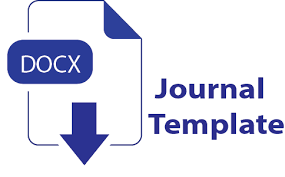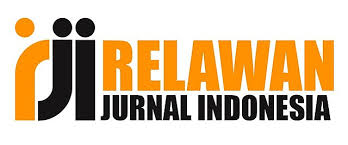Homonymy in Online Media CNN Arabic and Al-Wathon in Crime News on the Internet
DOI:
https://doi.org/10.58223/al-irfan.v8i1.315Keywords:
Homonym, Musytarak Al-lafdzhi, Arabic Online MediaAbstract
n semantic studies, semantic relations can express similarity of meaning, different meaning, scope of meaning, more meaning and multiple meaning. Linguistic factors are natural phenomena of language. And diachronically, language changes are possible, including changes in the meaning of words. Thus, it can cause misunderstandings in context. The discussions that will be carried out in this research include (1) explaining the meaning of homonymy, (2) explaining the various types of homonymy and including examples and explanations of the examples listed. With the aim of readers being able to understand what homonymy is in Arabic and examples. In order to achieve this goal, a qualitative research method was used using CNN Arabic and Al-Wathan data sources by quoting some sentences from the media. Next, data was collected using the document study method and analyzed. In this case, the news taken is about one of internet crime (cyber crime) which was published on the online media CNN Arabic and on the online media Al-Wathan. The results of this research are that there was no homonymy between morphemes, while homonymy between words, homonymy between phrases and between sentences were found in the news that we took from CNN Arabic and Al-Wathon media.
References
Abdul Chaer. (2006). Tata Bahasa Praktis Bahasa Indonesia. PT. Rineka Cipta.
Ahmad Warson Munawwir. (2020). Kamus al-Munawwir Arab-Indonesia Terlengkap. Penerbit Pustaka Progressif.
Anwar Rudi. (2016). SEMANTIK DALAM BAHASA ( Studi Kajian Makna Antara Bahasa Arab Dan Bahasa Indonesia ). Jurnal Kariman, 04(01), 115–136.
Arsyad, S. G. B. (2017). Fenomena Al-Isytira K Al-Lafz I Dalam Al-Quran. ’A Jamiy,Jurnal Bahasa Dan Sastra Arab, 06(1), 1–16.
Baiq Tuhfatul Unsi. (2013). AL-MUSHTARAK AL-LAFZI (HOMONIMI) DALAM BAHASA ARAB (Suatu Kajian Semantik) Oleh : Baiq Tuhfatul Unsi* 1. 1(2), 91–113.
Dr. Umar Sidiq, M.Ag Dr. Moh. Miftachul Choiri, M. (2019). Metode Penelitian Kualitatif di Bidang Pendidikan. In Journal of Chemical Information and Modeling (Vol. 53, Issue 9). http://repository.iainponorogo.ac.id/484/1/METODE PENELITIAN KUALITATIF DI BIDANG PENDIDIKAN.pdf
Faris, A. H. A. I. (n.d.). As Shohibi fii Fiqh Lughoh Al Arabiyah wa Masailuha wa Sunanu Al Arabiyah fii Kalamiha.
Fitri Amilia, A. W. A. (n.d.). Semantik: Konsep dan Contoh Analisis. MADANI.
Fitria, S. F. (2020). Al-Musytarak Al-Lafẓī dalam Al-Qur’an Menurut Kitab Tafsir Jāmi’ Al-Bayān (Kajian Tematik atas Lafal Dalal). UIN Syarif Hidayatullah Jakarta.
Gunawan, H., & Diana, J. (2023). Penggunaan Homofon dalam Komunikasi Bahasa Sumbawa Dialek Sumbawa Besar pada Masyarakat Dusun Pernang Desa Labuhan Burung Kecamatan Buer Kabupaten Sumbawa. JIMPS: Jurnal Ilmiah Mahasiswa Pendidikan Sejarah, 8(3). https://jim.usk.ac.id/sejarah
Hakim, T. (2004). Kamus At-Taufiq Arab-Jawa-Indonesia Disertai Istilah Fiqh.
Harianto, N., Afria, R., & Izar, J. (2022). Polisemi dan Homonim dalam Kajian Semantik Bahasa Arab. Prosiding Seminar Nasional …, 2, 48–53. http://www.conference.unja.ac.id/SNH/article/view/188%0Ahttps://www.conference.unja.ac.id/SNH/article/download/188/170
Hasmi, L. (2019). Kemampuan memahami Relasi Makna Siswa Kelas V SD Negeri 02 Mandiangin Koto Selayan Kota Bukittinggi dengan menggunakan Metode Kooperatif Tipe Make a Match. Padang: Menara Ilmu, 13(5), 60–61. https://jurnal.umsb.ac.id/index.php/menarailmu/article/view/1351
Izza, A. N. (2024). Perbandingan Kata Bahasa Indonesia Dan Bahasa Arab (Tinjauan Struktur Dan Semantik). Jurnal Motivasi Dan Pendidikan Bahasa, 2(1), 629–634. https://journal.widyakarya.ac.id/index.php/jmpb-widyakarya
Khansa, N. M. (2022). Globalisasi Terhadap Penggunaan Bahasa Indonesia. Jurnal Ilmiah Bahasa Dan Sastra, 9, 1–8.
Luqman, L. (2018). Al-Musytarak Al-Lafdzy Mendekonstruksi Argumen Tafsir Tekstual-Luqman. Jurnal Ibn Abbas, 1(2), 127–147. http://repository.uinsu.ac.id/5271/
Maharani, C., & Pramitasari, A. (2024). HOMONIMI DAN POLISEMI DALAM ACARA “ LAPOR PAK !” PADA CHANNEL YOUTUBE TRANS 7. 5, 243–254.
Ma’luf Louis, T. B. (2022). Kamus al-Munjid Fi al-Lughoh wa al-A’lam. Dar al-Masyrik.
Moleong, L. . (2017). Metode Penelitian Kualitatif. PT. Remaja Rosdakarya.
Muhammad bin Ibrahim al Hamidi. (2005). Fiqh Lughoh Mafhumuhu wa Mau’dhuahu wa Qodhoyaahu. Dar Ibnu Khuzaimah.
Mujahid, A. (2019). Makna Sinkronik-Diakronik Kata ‘Usr dan Yusr dalam Surat Al-InsyirÄh. Religia, 114, 97–114. https://doi.org/10.28918/religia.v22i1.1872
Murdiyanto, E. (2020). PENELITIAN KUALITATIF (Pertama). LP2M UPN Veteran Yogyakarta Press.
Ningrum, S. D., Dwi Sasongko, S., & Wariyanti, E. (2022). Ketaksaan Makna pada Media Sosial Twitter dalam Cuitan Akun Mata Najwa Tahun 2021. Semdikjar, 162–169. https://proceeding.unpkediri.ac.id/index.php/semdikjar/article/download/1929/1274/8324
Noermanzah. (2019). Bahasa sebagai Alat Komunikasi, Citra Pikiran, dan Kepribadian. Prosiding Seminar Nasional Bulan Bahasa (Semiba), 306–319. https://ejournal.unib.ac.id/index.php/semiba
Nur al-Din al-Munjid. (n.d.). Al-Isytirak Al-Lafdhi Al-Qur’anul Al-Karim Baina Nazariyah wa Tathbiq.
Nurhasanah, P. S., & Lestari, T. (2022). Pengaruh Aplikasi Tiktok terhadap Perkembangan Bahasa Siswa Sekolah Dasar. TERAMPIL: Jurnal Pendidikan Dan Pembelajaran Dasar, 8(2), 115–121. https://doi.org/10.24042/terampil.v8i2.8920
Pakaya, N. A. (2022). Al-Musytarak al-Lafẓī; Analisis kata Hisāb dalam Surat al-Nūr. `A Jamiy : Jurnal Bahasa Dan Sastra Arab, 11(2), 464. https://doi.org/10.31314/ajamiy.11.2.464-472.2022
Rahmawati. (2015). Istinbath Hukum Teungku Muhammad Hasbi Ash-Shiddiqiey (1st ed.). Deepublish.
Rofiah. (2024). Dinamika Homonimi, Homofon, dan Homograf dalam Percakapan Sehari-Hari. Jurnal Onoma: Pendidikan, Bahasa Dan Sastra, 10(1), 871–886.
Saida Gani Berti, A. (2017). Fenomena Al-Isytirak Al-Lafdzi Dalam Al-Qur’an. Ajamiy.
Siti Umrah, Burhanuddin, K. P. (2016). Homonim Bahasa Manggarai Dialek Biring Pada Masyarakat Kenari Desa Warloka Nusa Tenggara Timur. Kopula Junal Bahasa, Sastra Dan Pendidikan, 1–23. https://journal.unram.ac.id/index.php/kopula/article/view/3191
S, F. R. (2020). Hakikat Makna Dan Hubungan Antar Makna Dalam Kajian Semantik Bahasa Arab. Taqdir, 6(1), 87–102. https://doi.org/10.19109/taqdir.v6i1.5500
Taufiqurrohman. (2008). Leksikografi Bahasa Arab. UIN MALIKI PRESS.
Totok Jumatoro, S. M. A. (2009). Kamus Ilmu Ushul Fiqh. Penerbit Amzah.
Verhaar J.W.M. (1996). Asas-Asas Linguistik Umum. Gadjah Mada University Press.
Downloads
Published
How to Cite
Issue
Section
License
Copyright (c) 2025 Intan Handita Kuswoyo, Aimmatul Mufarrihah, Alawiyah Zuhri

This work is licensed under a Creative Commons Attribution 4.0 International License.
Lisensi :
Al-Irfan: Journal of Arabic Literature and Islamic Studies is published under conditions Creative Commons Attribution 4.0 International License / CC BY 4.0 This license permits anyone to copy and redistribute this material in any form or format, modify, modify, and make derivative works of this material for any purpose, including commercial purposes, so long as they credit the author for the original work.











